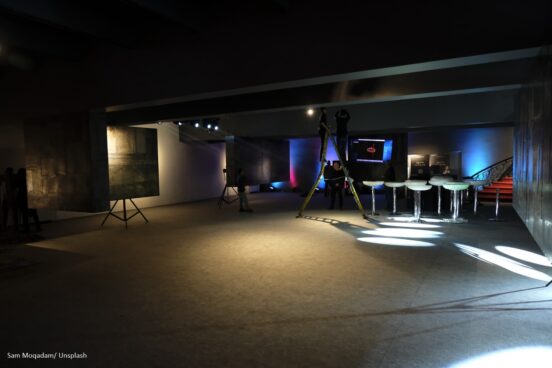The pandemic has been disastrous in many ways, not least of which has been the tragic loss of life. There have been major upheavals across many sectors of economy and society, as individuals and communities have adapted to stop the spread of the virus. This blog post looks at the creative economy, presenting research from an AHRC funded project that aims to investigate the impact on audiences, institutions, and the workforce in the UK’s cultural sector.
Pre-pandemic, the cultural sector was seen as a growing part of the economy, and was an important component of health and social policy agendas. This is to say nothing of the value and importance of arts and cultural engagement to people’s everyday lives. Indeed, cultural participation, everyday creativity, and digital cultural consumption have played a major role in people’s lockdown lives.
At the same time, we know from existing research that both the workforce and the audience for arts and culture are marked by extensive inequalities. As with much else associated with the pandemic, the impact of Covid-19 has reflected these pre-existing inequalities.
We can see this clearly in the workforce. Using data from the Office for National Statistics’ UK Labour Force Survey, the team I have been working with have charted both the overall impact on employment and hours worked in the cultural sector, alongside the uneven impact on different demographic groups. The story is complex. Some areas of the creative economy have sustained employment numbers, whilst others have seen catastrophic contractions in their workforce.
In the six months following the beginning of lockdown, the ONS LFS suggested there were 55,000 job losses (a 30% decline) in music, performing and visual arts, and significantly higher than average numbers leaving creative occupations as compared to previous years. Even where there were not high levels of job losses, for example in film, TV, video, radio and photography occupations, there were large reductions in working hours.
Government intervention has helped some areas of the creative economy. Our film and TV workers, for example, have covid-secure sets and studios, and the evidence from hours worked suggested the furlough scheme helped museums, galleries, and libraries occupations.
However, as high-profile campaigns have indicated, many cultural workers have faced grim conditions. This is has been especially acute in music, performing and visual arts, partially as a result of the high levels of self-employed and freelancers in these occupations. At the end of 2019, ONS data indicated 88% of music, performing and visual arts occupations were self-employed, and freelancers, as a subset of the self-employed were 27% of the workforce. A high proportion of the 55,000 job losses were self-employed and freelance, and the latest data, covering the end of 2020 suggest the second lockdown saw further contractions in the number of workers.
In terms of demographics, we’ve used a combination of the LFS and the Longitudinal LFS to explore who is leaving creative jobs. More than a quarter (27%) of creative workers under the age of 25 left creative occupations after lockdown, compared with 14% of workers aged 25 and over. The U25s also saw greater reductions in the number of hours worked, as compared to the over 25s.
If age is a source of concern, then there are equal worries about those who have traditionally been excluded from the cultural workforce. In particular, ethnic minorities, women, and disabled people are all at risk of being marginalised, even from those areas of the creative economy that have not seen as severe contractions in numbers of jobs and hours worked.
At present, we are awaiting the data from the first part of 2021, in order to understand the impact of the third lockdown. Whilst there is welcome rhetoric about building back better, the impact on key parts of cultural production is likely to be a medium- to long-term issue, beyond the immediate problems our research is demonstrating.
Although cultural engagement seemed to be a key part of surviving lockdown, different social groups have seen differing patterns of consumption and participation. Again, these patterns reflect longstanding issues of inequality. The relationship between inequalities in production and consumption is complex; but even at the moment where culture seemed most essential, and the absence of attendance and ‘live’ events most keenly felt, the workforce may be under threat of becoming more unequal and more exclusive.
Dave O’Brien is Chancellor’s Fellow in Cultural and Creative Industries, based in the School of History of Art at the University of Edinburgh. He has published widely on cultural policy, urban regeneration, cultural work, public policy, social mobility, and cultural consumption. His most recent book, co-authored with Drs Orian Brook and Mark Taylor, is Culture is bad for you: Inequality in the cultural and creative industries.





Comments by Hashemi